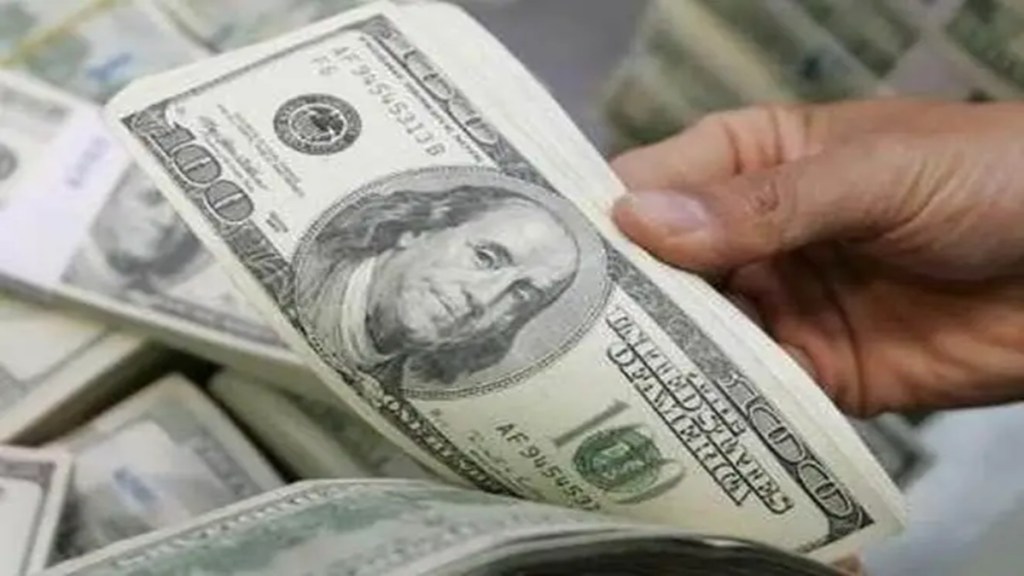A sustained surge in Covid cases in China could further exacerbate a contraction in India’s exports to its fourth-largest market in the coming months, as order flow has already been faltering at a steady pace, trade sources told FE. Some exporters now forecast a 40-45% crash in exports to China this fiscal from $21.3 billion in FY22 if the Covid surge continues through January.
Between April and October, India’s exports to China shrank 37.2% from a year before to $8.84 billion, far underperforming a 12.5% rise in the country’s overall merchandise despatches (See chart). In October, the contraction in exports to Beijing was as high as 44.2% to $1 billion, according to official data. It has already started weighing on the country’s overall merchandise exports, which shrank 16.7% in October and barely rose in November.
China typically sources from India a lot of raw materials and intermediate inputs–including cotton, iron ore and iron & steel–and limited finished products, such as select capital goods.
Ajay Sahai, director general at the Federation of Indian Exports Organisation, said, given that the world’s second-largest economy had already been slowing down, its appetite for raw inputs had remained limited this fiscal. “The latest Covid surge just made the matter worse. There has been a huge fall in India’s exports of cotton, aluminium, copper, iron ore and iron & steel products to China. However, the marine segment has still done reasonably well,” he added.
Of course, the crash in iron ore and steel product exports to China have also been caused by a steep hike in export duties on these products in May to rein in inflation. Of course, the duty hikes were rolled back last month.
Arun Kumar Garodia, chairman of the engineering exporters’ body EEPC India, said: “Our exports to China in December may fall at a steeper pace than in November.” Engineering exports to China crashed by 40% in November, far worse than a 0.3% fall in total such exports during the month to $8.1 billion.
Thanks to the global turmoil and the Covid surge in China, India’s engineering exports, which account for roughly a fourth of the overall merchandise despatches, may even drop from the last year’s level of $112 billion, he added. However, Garodia expected Covid cases in China to ease from January, which should bring back some normalcy in exports to the neighbour.
According to a Bloomberg News report on December 23, almost 37 million people in China might have been infected with Covid-19 on a single day last week. About 248 million people, almost 18% of China’s population, may have contracted the virus in the first 20 days of December, the report said, citing minutes from a meeting of China’s National Health Commission.
China’s business confidence eased to its lowest in close to 10 years, a survey by World Economics showed on Monday. While Beijing scrapped its zero-Covid policy of lockdowns and massive testing on December 7 due to growing public protests, it comes hardly as a solace, as the numbers of those tested positive have kept rising.
The good thing is ports are still functioning and goods are still being despatched to China, trade sources said. “However, there is no guarantee that they will remain so in the coming weeks. Order flow has slowed dramatically in many segments, although in some other segments, such as food and pharmaceuticals, they are still flowing in. The situation is very uncertain,” said the chief of a state-run export promotion council.
R Uday Bhaskar, director general at the Pharmaceutical Export Promotion Council, said, the Covid situation in China is being closely watched. “Pharma exports to China, however, haven’t been affected much so far,” he added. This is partly due to the surge in Covid, said another industry executives.
The fall in overall exports to China until October this fiscal was driven by a plunge in supplies of ores, slag & ash (80.8%), iron & steel (79.2%), aluminium and such articles (83.9%), cotton (94.4%), copper and articles (67.9%) and electrical machinery, equipment, etc (40.1%).
The World Bank last week slashed its growth forecasts for China to 2.7% for 2022 from 4.3% predicted in June and to 4.3% for 2023 from 8.1%, thanks to the escalating Covid situation.

